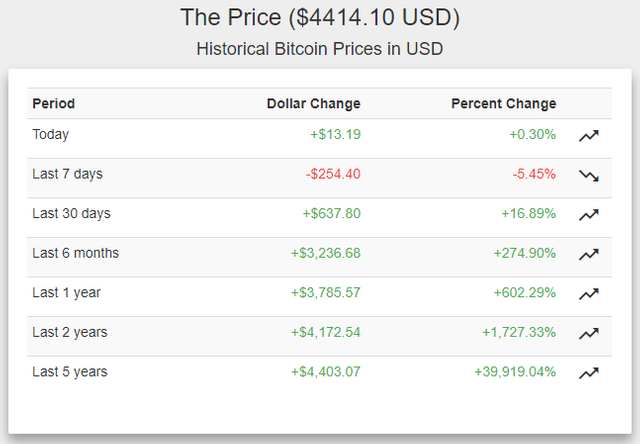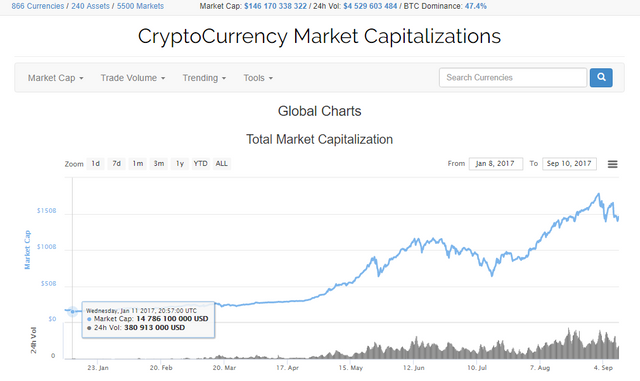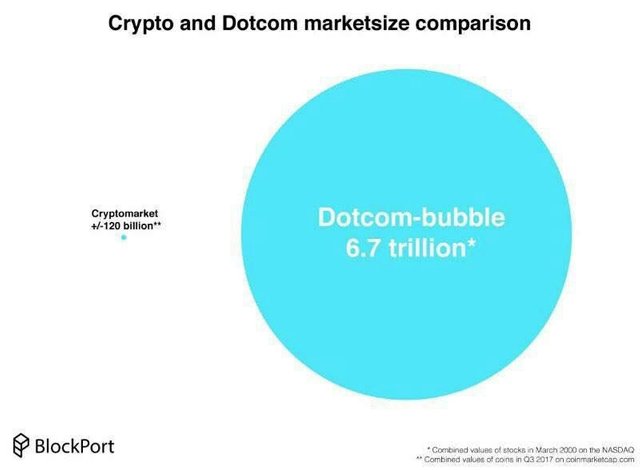Is it really a crypto currency "wrapper"?
 Prominent representatives of the mainstream economy and officials of the highest rank often disparagingly speak about the crypto-currencies, obviously underestimating their potential. With what words these "recognized experts" did not call bitcoin! It is already impossible to count how many times in the world-known publications the phrase about the "crypto-currency bubble" and the inevitable collapse of bitcoin sounded.
Prominent representatives of the mainstream economy and officials of the highest rank often disparagingly speak about the crypto-currencies, obviously underestimating their potential. With what words these "recognized experts" did not call bitcoin! It is already impossible to count how many times in the world-known publications the phrase about the "crypto-currency bubble" and the inevitable collapse of bitcoin sounded.
I must say that in this case the Russian establishment is clearly on the front line. Not so long ago from the lips of the president of PJSC "Rostelecom" Mikhail Oseevsky there was a rather ambiguous comparison of crypto-currencies with "candy wrappers" from sweets, the value of which is purely subjective. In other words, the head of Rostelecom, assessing crypto-active assets, viewed them as something "toy", devoid of intrinsic value and existing, regardless of, in his own words, "promising technology of blocking."
It is worth noting that the statement of this high-ranking official is only a special case of idealizing the underlying technology of crypto-currencies with a disregard for the digital currencies themselves.
Does not it seem nonsense to call "candy wrappers" assets whose capitalization exceeds the market value of the world's largest companies and even the GDP of some countries? Is it fair to evaluate crypto-currencies without taking into account the prospects of the underlying technology?
In the framework of this article, an attempt will be made to dispel the myth of "candy candy wrappers", whose value, in the opinion of some, is "strictly subjective".
- Bitcoin and blockchain
Thus, bitcoin, which appeared at the turn of 2008-2009, is the first digital currency, based on the technology of blockage that has become widely known. The latter is currently being explored by the world's largest companies and, in the opinion of many researchers, this technology will change the appearance of the most diverse industries (not only financial), and will radically change many existing business models.
A huge number of crypto-currencies, whose cumulative capitalization has recently exceeded the $ 150 billion mark, is based on the very technology of blocking, which is so fashionable now to speak. In each of the digital currencies there is a certain technological solution and, of course, an idea, the embodiment of which the project team is working on.
Of course, among all this abundance there are a lot of cryptoactive dummies (shitcoins), which obviously can not change the financial market or anything else. However, competition is the soul of the market, which means that in the process of natural selection the best crypto assets will survive, which, possibly, can change many aspects of human existence.
- Private money
Austrian economist, Nobel laureate Friedrich von Hayek in his work "Private Money" (1976) proposed to denationalize money, because, in his opinion, the state monopoly on their emission for society is harmful. In his famous work, Hayek proposes to eliminate the monopoly of the central bank, creating for the environment an environment where more stable currencies, best performing the functions of money, will in the course of a competitive struggle displace those currencies that do worse with the duties assigned to them.
In other words, in the opinion of the famous economist, since money is a commodity, and absolute monopoly is harmful to society, then in order to achieve economic growth, decentralized different types of money must compete with each other.
Also, according to von Hayek, in the economic literature there is not any intelligible answer to the question of the appropriateness of a state monopoly on monetary emission.
- "It is a relic of the medieval idea that it is the state that somehow gives money a value that they themselves would not have had," F. von Hayek, "Private Money" (Chapter V. Mysticism of the "legal tender"), .
A few decades later, the distinguished American economist Milton Friedman predicted a decrease in the influence of governments through the Internet, as well as the emergence of "reliable electronic money," allowing anonymous transactions.
- The internal cost of bitcoin or why people get rid of fiat money
Returning to bitcoin, many criticize him not only for "lack of security" but also for the fact that it is impossible to "touch", because it exists only in digital form. I must say that in this respect bitcoin did not bring anything "innovative", especially if you compare the turnover of cash in the form of coins and banknotes with non-cash turnover in the form of digits in the memory of bank computers.
As for the "insecurity" of crypto-currencies, this is pure myth. Bitcoin is not without reason often referred to as "digital gold" for the exceptional complexity of its extraction under a strictly limited offer. Bitcoins can be mined, that is, they are generated by powerful processors that solve the most complicated mathematical calculations. Billions are invested in billboard equipment located throughout the world, in aggregate it is more powerful than the world's most productive computers.
In this connection, the arguments of the well-known cryptoenterusist and founder of MGT Capital Investments John McAfee are interesting. In response to criticism of the head of JPMorgan Chase & Co. Jamie Daymon to address bitcoin, Makafi said the following:
"You call bitcoin a fraud. But I'm bitcoin-miner. We create bitcoins. The extraction of each of them costs one thousand dollars. And what does it cost to create one dollar? So what's the hoax? One currency costs as a paper, and the other to me and other miners manages more than a thousand dollars. This is called "proof of work performance" »

Thus, according to Makafi, one of the confirmations of bitcoin's value are huge investments of miners in the capacity of supercomputers for the production of crypto-currency and the cost of paying bills for electricity.
Returning to the traditional financial system, it is worth noting that the independence of the central bank of any country from the government is formal, existing only on paper. At the same time, the issue of national currencies is, in fact, unlimited, which means that money can be printed as many as you want.
The banking system of most countries, with the help of a "printing press" and a credit multiplier, produces huge amounts of monetary mass, often incomparable with the needs of the real economy. The excessive amount of money supply inevitably leads to inflation - an increase in the average price level and further depreciation of national (fiat) currencies. At the same time, the latter are largely secured by the people's trust in the current system and are supported only by declared economic successes, as well as by currency interventions and manipulations with the central bank's key rate.
Thus, it can be concluded that national currencies are printed under all circumstances, regardless of the objective state of affairs in the economy.
Fiat (or fiduciary, from Latin fiducia - trust) money does not have intrinsic value and, therefore, have value as long as the population of the country trusts the government and the banking system of the country. Thus, the fall in the authority of state power leads to a decrease in the purchasing power of fiat money, inflation, capital outflows, and so on.
In the context of global financial instability, many seek to save their funds by creating a diversified investment portfolio consisting of stocks, bonds, precious metals and other instruments. In recent years, the number of investors is growing rapidly, including a fundamentally new class of assets - crypto-currencies.
Returning to bitcoin, one can not help but note that his emission is strictly limited to 21 million coins. At the same time, currently more than 16.5 million bitcoins are in circulation, and every four years there is a decrease in the award of miners in bitcoins for the extracted block. Thus, the exponentially growing demand is increasingly ahead of the supply growth, which inevitably affects the growth of the bitcoin price.
Below is the dynamics of growth in the price of bitcoin:

Data: coin.dance/stats (as of September 10, 2017)
As can be seen from the data of the Coin.Dance service, the growth of bitcoin looks more than spectacular.
As for the aggregate market capitalization of the Crypto-currency, it has only increased tenfold since the beginning of this year.

Data: coinmarketcap, as of 10.09.2017
Consequently, almost any investor who invested this year in a diversified portfolio of digital currencies had an excellent chance to multiply its capital several times.
Many believe that bitcoin has far from exhausted the potential for its growth. Thus, the head of Blockchain, Peter Smith, admitted that bitcoin could reach a price of $ 500,000 by 2030. Even more bold forecast was made this summer by CEO of MGT Capital Investments John McAfee.
Why does the crypto currency have their value?
Returning to the theory, we note that the goods have different economic value, determined by the market. In other words, different objects have their value only because people want to own them for one reason or another.
Money is a commodity. The price of any product is based on a subjective assessment of its value and degree of utility. For example, the price of a canvas by a well-known artist does not consist of the cost of the artist's canvas, paints and man-hours spent working for it. The value of a picture is a subjective thing, which is reflected in the equilibrium price developing at the intersection of supply and demand.
As for the example of utility, fresh water will be perceived and evaluated in completely different ways by the inhabitants of the European Union and the countries of central Africa.
All this applies to crypto-currencies. So, the value and utility of each digital currency (and, accordingly, its market price) is determined by a variety of factors. Among them:
- - the problem solved by this or that block-asset;
- - Innovation of the technology underlying the crypto currency;
- - the level of confidentiality of transactions (for example, recently there has been an increase in the prices of anonymous crypto-currencies, including Monero, Zcash, etc.);
- - project team, reputation, qualifications and success of developers;
- - promotion through the media, promoting the popularization of the currency;
- - electricity spent on proof of work performance (Proof-of-work) and, accordingly, protection of distributed systems;
- - the complexity of the network;
- - Scum of large projects, hacking of stock exchanges.
The following factors are related to the law of supply and demand, and are also largely reflected in the "Fisher equation":
- - Monetary policy (the fewer tokens in circulation and / or the more complex the process of extracting the Crypto-currency - the higher the price of the token, other factors being equal);
- - Demand for tokens;
- - the volume of transactions (closely related to the previous factor and is its particular case, and often it depends on the size of commissions and the speed of transactions)
Conclusion
Indeed, the value of digital currencies owes much to their popularity, as well as to the efforts of developers, the development of infrastructure and ... global financial instability.
Since, as already mentioned, any crypto currency has a value determined by the market, it means that only market participants (all consumers, not just officials) determine whether a digital asset is a "wrapper" or not. In particular, everyone decides for themselves whether to invest in crypto currency or not.
If, over time, the number of market participants increases, considering, for example, that crypto-currencies are a good instrument for hedging risks and an important component of a diversified investment portfolio, the capitalization of digital currencies will continue to grow rapidly. As a result, fewer people will make statements about "candy candy wrappers" and "the inevitable collapse of the bubble crypto".
Whatever it was, digital currencies are an objective reality and with the volume of their market it is necessary to reckon. Ultimately, the market itself will determine which crypto-currencies "will sink into oblivion," and which ones will remain.
As for the arguments about the "inflation" of the crypto currency, even if this is so, the volume of this market is still very far, for example, to the "dot-com bubble" that existed in the period from about 1995 to 2001:

Now almost everyone knows about crypto-currencies and about mining, more and more companies start accepting crypto-currencies as payment for goods and services, and in Japan bitcoin has become a legitimate means of payment since April. Technologies are developing, and the popularity of crypto-currencies in the world is growing, which can not but be reflected in the dynamics of their prices.
If many people consider crypto currencies as an excellent tool for preserving value, then the exponentially growing demand for them should not be surprising. People do not want to lose their savings and wish to diversify their portfolios with investment instruments with an inverse correlation with traditional assets.
However, the authorities of many countries do not really like this state of affairs. Heads of central banks, especially developing countries, are probably concerned about the possible outflow of deposits from the banking system, but even more so that the usual monetary and credit policy tools will simply stop working. So, recently the head of the Central Bank of the Russian Federation Elvira Nabiullina promised not to allow crypto-currencies to enter the Russian market. Also, significant uncertainty reigns now in China.
However, it is unlikely that governments will manage to destroy crypto-currencies with administrative methods. After all, many of them are anonymous, and the "black market", as you know, can well cope with the failures of the state.
So can the governments of countries, before banning anything and claiming the "risks of financial pyramids", once again think about the competitiveness of such customary national currencies, as well as other important issues?